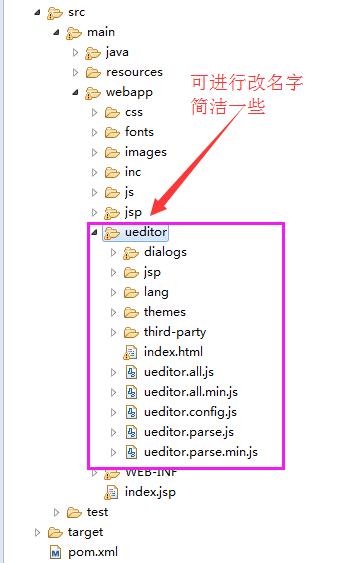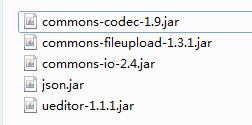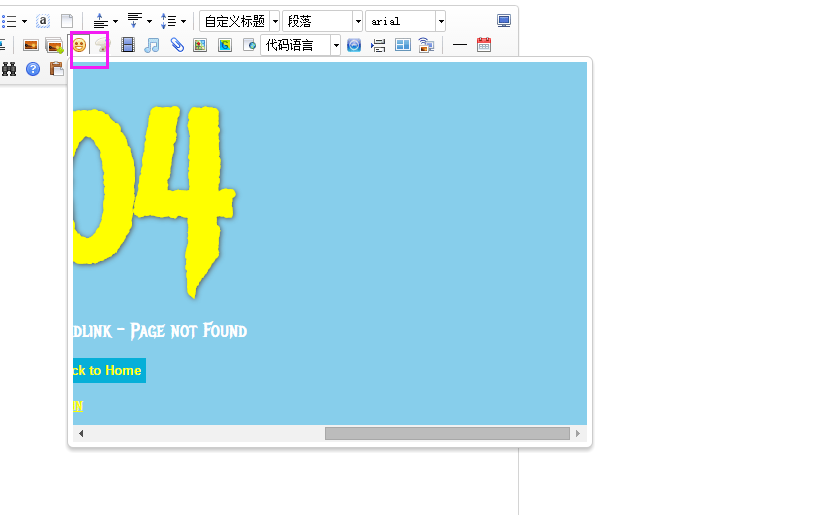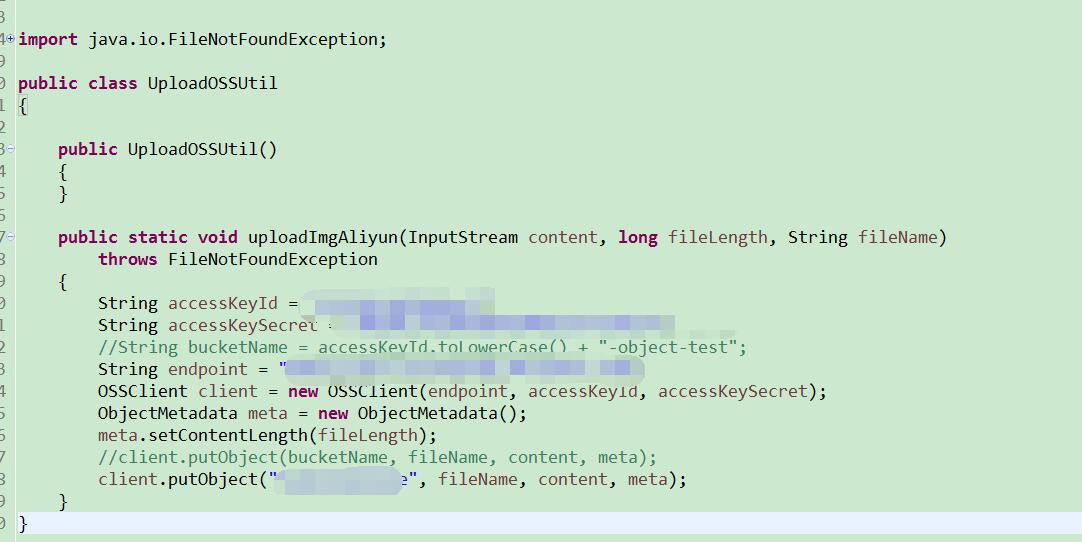目录
关于此文
项目中要实现编辑器生成带格式的html文档,存入模板,最后生成html的URL,所以选择了UEditor。
UEditor是由百度WEB前端研发部开发的所见即所得的开源富文本编辑器,具有轻量、可定制、用户体验优秀等特点。
之前没有接触过编辑器,从头开始摸索。看API,看网上的例子。之前,用的是UMeditor,是UEditor的mini版本。用的人少,例子也少。让我很苦恼。之后又换回了完整版。
官网地址:http://ueditor.baidu.com/website/index.html
下载源码
源码下载地址:http://ueditor.baidu.com/website/download.html

我是JSP版本。ueditor1_4_3-utf8-jsp,解压后,放入工程中。

将ueditor/jsp/lib下的jar包导入WEB-INF下lib下,maven工程导入外部jar方法,如下:

例子:
<dependency> <groupId>cn.com.umeditor</groupId> <artifactId>json</artifactId> <version>1.0</version> <scope>system</scope> <systemPath>${project.basedir}/src/main/webapp/WEB-INF/lib/json.jar</systemPath> </dependency>
JSP代码
编辑自己的JSP页面:
<%@ page language="java" contentType="text/html; charset=utf-8" pageEncoding="utf-8"%> <html> <head> <meta http-equiv="Content-Type" content="text/html; charset=UTF-8"> <title>惠民网消息推送平台</title> <meta charset="utf-8"> <script src="<%=request.getContextPath() %>/ueditor/ueditor.config.js"></script> <script src="<%=request.getContextPath() %>/ueditor/ueditor.all.min.js"></script> <script src="<%=request.getContextPath() %>/ueditor/lang/zh-cn/zh-cn.js"></script> <script src="<%=request.getContextPath() %>/ueditor/third-party/jquery-1.10.2.min.js"></script> <link href="<%=request.getContextPath() %>/ueditor/themes/iframe.css" type="text/css" rel="stylesheet"> <link href="<%=request.getContextPath() %>/ueditor/themes/default/css/ueditor.css" type="text/css" rel="stylesheet"> <link href="<%=request.getContextPath() %>/ueditor/third-party/codemirror/codemirror.css" type="text/css" rel="stylesheet"> </head> <style type="text/css"> div{ width:100%; } </style> <body> <form method="post" action="<%=request.getContextPath() %>/test/test.do"> <br>类别:<input type="text" name="stype" /> 标题:<input type="text" name="title" /> <br/> <!--style给定宽度可以影响编辑器的最终宽度--> <!-- 加载编辑器的容器 --> <!-- 实例化编辑器 --> <script id="editor" type="text/plain" style="1024px;height:500px;"></script> <script type="text/javascript"> var ue = UE.getEditor('editor'); </script> <input type="submit" value="提交"/> </form> </body> </html>
遇到的错误:1)var ue = UE.getEditor('editor'); 报错原因:js引入错误,路径错误/引入顺序错误。
2)表情包,html页面都是404.路径都对,文件也存在,就是找不到。错误原因:spring拦截器问题。(表情包要再官网下载后导入到程序中,下载的包里面有很详细的导入方法。)

错误解决就可以启动tomcat进行展示页面了。
Java代码
由于上传图片/上传文件都保存到本地的tomcat下,下次启动,文件/图片就会消失。根据业务需求,都是把图片/文件存到服务器下。或者本地的其它路径。
然后UEditor的上传代码都是写到源码中了。让我一阵纠结。百度了一下,搜到了一个非常棒的例子,符合我项目,符合框架,什么都符合,下载源码进行实验。
源码下载地址:http://download.csdn.net/detail/qq457557442/8322227
博客地址:http://blog.csdn.net/wang_jingj
上代码
action:
package getui.controller; import getui.util.FileUtils; import java.io.IOException; import java.io.InputStream; import java.util.HashMap; import java.util.Map; import javax.annotation.Resource; import javax.servlet.http.HttpServletRequest; import org.springframework.http.MediaType; import org.springframework.stereotype.Controller; import org.springframework.util.StringUtils; import org.springframework.web.bind.annotation.RequestMapping; import org.springframework.web.bind.annotation.RequestMethod; import org.springframework.web.bind.annotation.ResponseBody; import org.springframework.web.multipart.MultipartFile; import org.springframework.web.multipart.MultipartHttpServletRequest; @Controller @RequestMapping(value = "/test") public class testController { // 文件上传路径 @Resource(name="fileuploadPath") private String fileuploadPath; // 文件读取路径 @Resource(name="httpPath") private String httpPath; /** * 文件上传Action * @param req APPLICATION_JSON_VALUE * @return UEDITOR 需要的json格式数据 */ @RequestMapping(value = "/test.do") @ResponseBody public Map<String,Object> upload(HttpServletRequest req){ Map<String,Object> result = new HashMap<String, Object>(); MultipartHttpServletRequest mReq = null; MultipartFile file = null; InputStream is = null ; String fileName = ""; // 原始文件名 UEDITOR创建页面元素时的alt和title属性 String originalFileName = ""; String filePath = ""; try { mReq = (MultipartHttpServletRequest)req; // 从config.json中取得上传文件的ID file = mReq.getFile("upfile"); // 取得文件的原始文件名称 fileName = file.getOriginalFilename(); originalFileName = fileName; if(!fileName.isEmpty()){ is = file.getInputStream(); fileName = FileUtils.reName(fileName); filePath = FileUtils.saveFile(fileName, is, fileuploadPath); } else { throw new IOException("文件名为空!"); } result.put("state", "SUCCESS");// UEDITOR的规则:不为SUCCESS则显示state的内容 result.put("url",httpPath + filePath); result.put("title", originalFileName); result.put("original", originalFileName); } catch (Exception e) { System.out.println(e.getMessage()); result.put("state", "文件上传失败!"); result.put("url",""); result.put("title", ""); result.put("original", ""); System.out.println("文件 "+fileName+" 上传失败!"); } return result; } }
工具包
package getui.util; import java.io.File; import java.io.FileOutputStream; import java.io.IOException; import java.io.InputStream; import java.io.OutputStream; import java.util.Date; /** * 文件上传/图片上传 工具类 * FileUtils.java * * @author Anny * */ public class FileUtils { /** * 文件copy方法 * @param src * @param dest */ public static void copy(InputStream src, OutputStream dest) { try { byte[] tmp = new byte[1024]; int len = -1; while ((len = src.read(tmp)) != -1) dest.write(tmp, 0, len); } catch (IOException e) { throw new RuntimeException(e); } } /** * 给文件重命名 防止覆盖 * @param fileName * @return 时间戳+原始文件的后缀 */ public static String reName(String fileName){ return new StringBuffer().append(new Date().getTime()).append(fileName.substring(fileName.indexOf("."))).toString(); } /** * 文件保存 * @param fileName reName之后的文件名称 * @param content * @param filePath 文件保存路径 * @return * @throws IOException */ public static String saveFile(String fileName,InputStream content,String filePath) throws IOException { FileOutputStream fos = null; StringBuffer contentPath = new StringBuffer("");; // 上下文地址 try { contentPath.append("detail/"); // contentPath.append("/"); contentPath.append(fileName); // File pictureFile = new File(filePath + contentPath.toString()); File pf = pictureFile.getParentFile(); if(!pf.exists()){ pf.mkdirs(); } pictureFile.createNewFile(); // 创建文件 fos = new FileOutputStream(pictureFile); FileUtils.copy(content, fos); // 上传到OSS UploadOSSUtil.uploadImgAliyun(content, pictureFile.length(), contentPath.toString()); } catch (Exception e) { throw new IOException("文件保存失败!"); } finally { if (fos != null) { try { fos.close(); } catch (Exception e) { throw new IOException("文件保存失败!"); } } } return contentPath.toString(); } }
JSP
<script> //编辑器资源文件根路径 最好在ueditor.config.js中配置 window.UEDITOR_HOME_URL = "/getui-huimin/ueditor/"; //建议使用工厂方法getEditor创建和引用编辑器实例,如果在某个闭包下引用该编辑器,直接调用UE.getEditor('editor')就能拿到相关的实例 var ue = UE.getEditor('editor',{initialFrameHeight: 500,initialFrameWidth:800,maximumWords:3000,elementPathEnabled:false}); //复写UEDITOR的getActionUrl 方法,定义自己的Action UE.Editor.prototype._bkGetActionUrl = UE.Editor.prototype.getActionUrl; UE.Editor.prototype.getActionUrl = function(action) { if (action == 'uploadimage' || action == 'uploadfile') { var id = $('#carInfoId').val(); return '<%=request.getContextPath() %>/test/test.do'; } else { return this._bkGetActionUrl.call(this, action); } }; // 复写UEDITOR的getContentLength方法 解决富文本编辑器中一张图片或者一个文件只能算一个字符的问题,可跟数据库字符的长度配合使用 UE.Editor.prototype._bkGetContentLength = UE.Editor.prototype.getContentLength; UE.Editor.prototype.getContentLength = function(){ return this.getContent().length; } </script>
阿里云jar包引入配置
阿里云jar引入
<!-- aliyun --> <dependency> <groupId>com.aliyun.openservices</groupId> <artifactId>aliyun-openservices</artifactId> <version>1.0.10</version> </dependency> <dependency> <groupId>com.aliyun</groupId> <artifactId>aliyun-java-sdk-core</artifactId> <version>2.1.6</version> </dependency> <dependency> <groupId>com.aliyun</groupId> <artifactId>aliyun-java-sdk-sts</artifactId> <version>2.1.0</version> </dependency> <dependency> <groupId>com.aliyun</groupId> <artifactId>aliyun-java-sdk-yundun</artifactId> <version>2.1.3</version> </dependency> <dependency> <groupId>com.aliyun</groupId> <artifactId>aliyun-java-sdk-slb</artifactId> <version>2.0.0-rc1</version> </dependency> <dependency> <groupId>com.aliyun</groupId> <artifactId>aliyun-java-sdk-oms</artifactId> <version>2.0.1</version> </dependency> <dependency> <groupId>com.aliyun</groupId> <artifactId>aliyun-java-sdk-ecs</artifactId> <version>2.0.0-rc2</version> </dependency> <dependency> <groupId>com.aliyun</groupId> <artifactId>aliyun-java-sdk-rds</artifactId> <version>2.0.0-rc1</version> </dependency> <dependency> <groupId>com.aliyun</groupId> <artifactId>aliyun-java-sdk-bss</artifactId> <version>2.0.0-rc1</version> </dependency> <dependency> <groupId>com.aliyun</groupId> <artifactId>aliyun-java-sdk-ocs</artifactId> <version>2.0.0-rc1</version> </dependency> <dependency> <groupId>com.aliyun</groupId> <artifactId>aliyun-java-sdk-cms</artifactId> <version>2.0.0</version> </dependency> <!-- aliyun -->

spring配置文件:
<bean id="fileuploadPath" class="java.lang.String"> <constructor-arg index="0" value="${fileuploadPath}"></constructor-arg> </bean> <bean id="httpPath" class="java.lang.String"> <constructor-arg index="0" value="${httpPath}"></constructor-arg> </bean> <bean id="multipartResolver" class="org.springframework.web.multipart.commons.CommonsMultipartResolver"> <property name="maxUploadSize"> <value>10485760</value> </property> </bean>
config.properties
#file upload path
fileuploadPath=F:/worksoft/nginxfilepath -- 本地目录
#file read path
httpPath=http://rexs.xxx.cn/
--读取回显的地址:阿里云服务器地址
成功啦!
一切准备就绪,开始上传。
显示上传到本地 保存一份后,在进行服务器上传。

前两个 由于网络,上传阿里云失败。本地保存成功。
后一个 上传成功了。成功后回显回来。

访问阿里云服务器图片地址,能够下载到图片。^_^